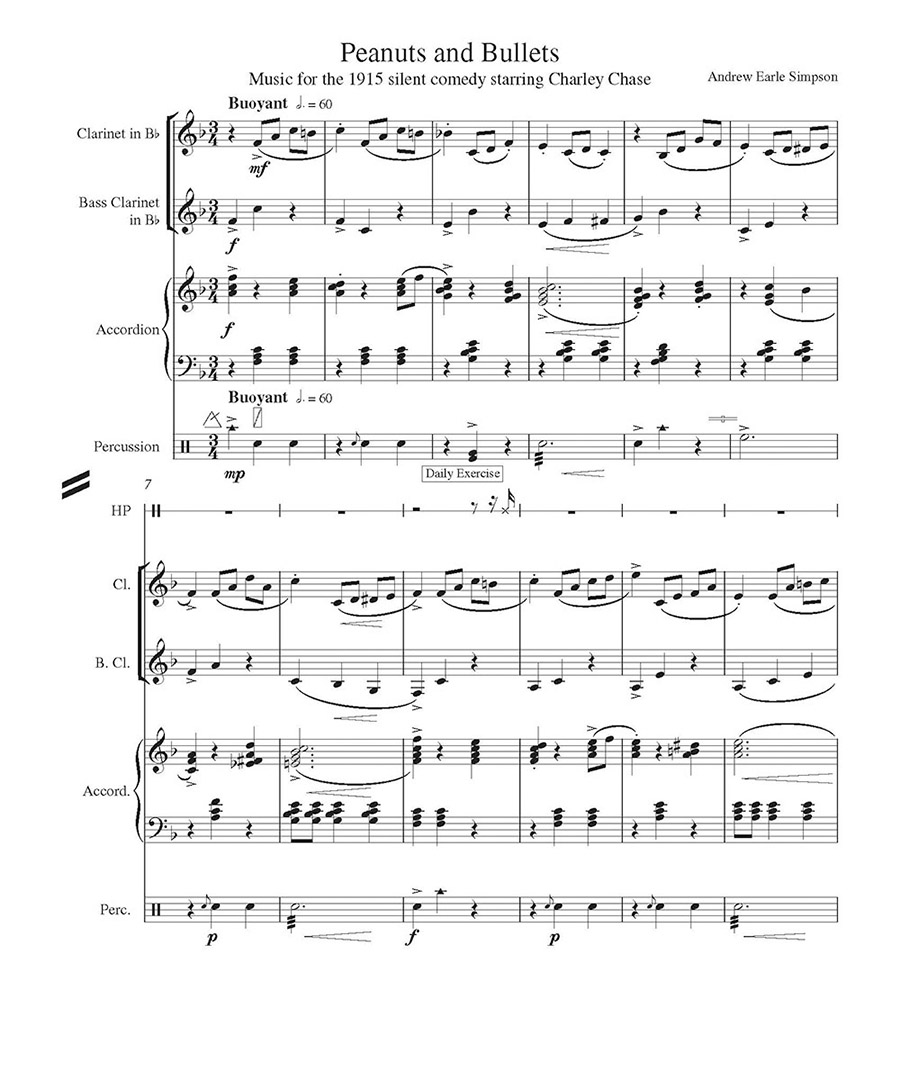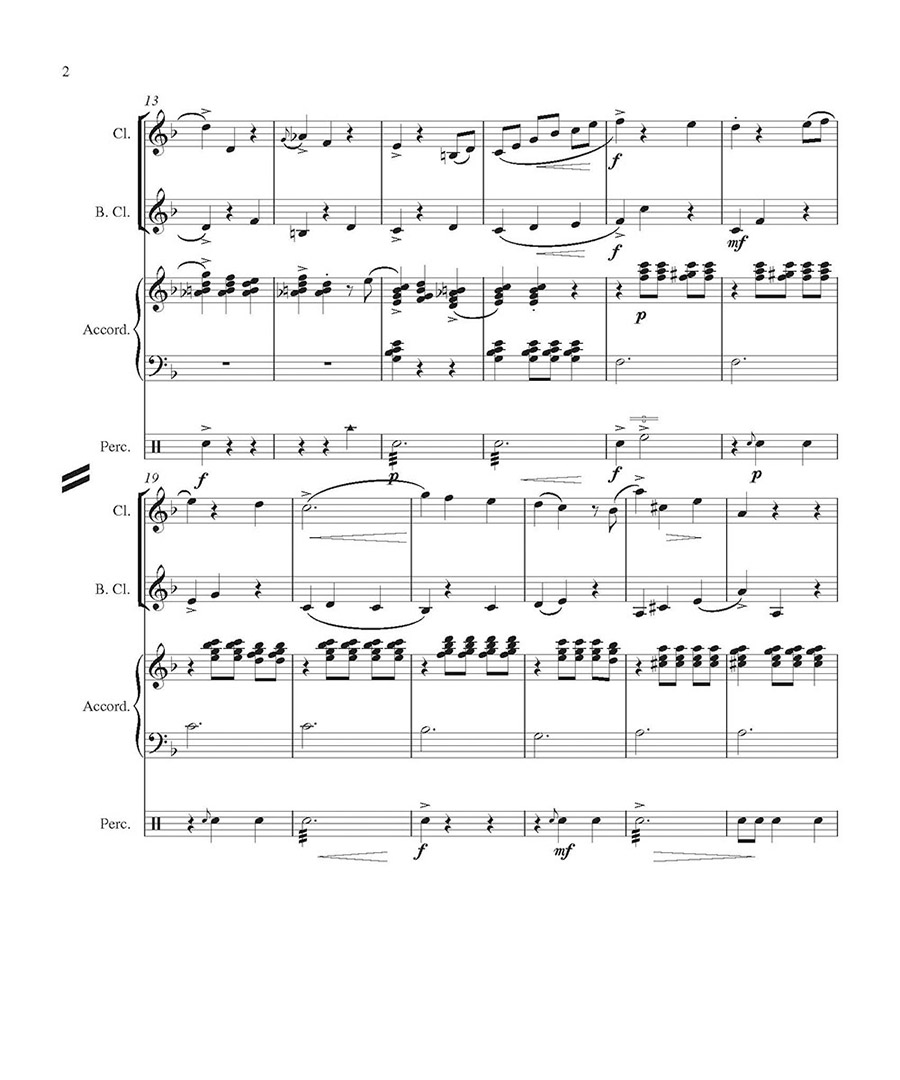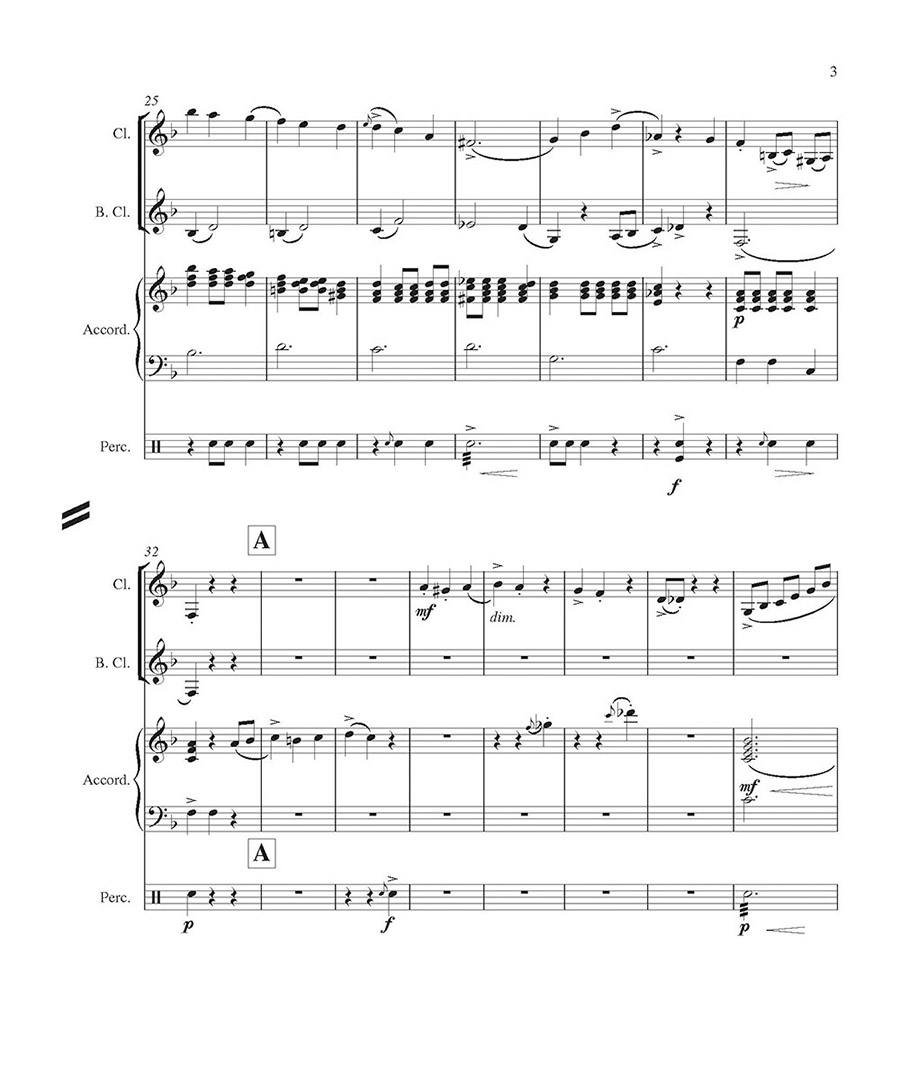Peanuts and Bullets (2008)
for chamber ensemble, 12 minutes
Synopsis
A young man gets into trouble with his landlord and the cops, with a classic chase scene at the end.
Instrumentation
clarinet, bass clarinet, alto saxophone, accordion, piano, percussion
DVD
Becoming Charley Chase, Allday Entertainment (distributed by VCI) (2009)
Watch + Listen
An Idea for Lunch
March
Chase
An Idea
March
Chase
Film synopsis and musical notes
Peanuts and Bullets (1915) is a delightful one-reel comedy which features a very young Charley Chase. As a Keystone comedy, it contains a good deal of the fast-paced, knockabout action typical of the period, but Chase manages even in this early film to project the beginnings of that suave-yet-goofy persona which so many find endearing.
Act I
Three characters are introduced in quick succession. Charley is an impoverished musician (as his concertina indicates) living on the upper story of a boarding house. Predictably, he is behind on the rent, harassed by the landlady. His neighbor is a muscle-man (Fritz Schade, a Keystone regular), continually lifting weights. Beneath Charley’s window is a fruit stand, run by a man from whom everyone feels entitled to steal fruit (a boy and a cop both participate in this!). All three, it turns out, are romantic rivals. Their love interest is introduced by one of my favorite intertitles of all silent film, which says simply: “The Girl They All Love.” The girl (Dora Rodgers) enjoys the attentions of all three, but remains “libre.”
Act II
An Idea for Lunch. Charley, having unsuccessfully attempted to trade his concertina for the fruit-seller’s produce, rigs up a scheme whereby he can grab and lift the fruit up to his window. The fruit-seller discovers and thwarts this plan, complete with a Keystone kick in the butt. Now Charley plots his revenge. Grabbing a pistol from his drawer in haste, he thinks better of it, and empties the bullets into the vendor’s peanut roaster beneath his window (hence the title).
Act III
Charley’s plan takes effect in time, and the exploding bullets send the fruit-seller’s cart moving on its own. Fruit-seller, cops, and townspeople run from the cart, and all end up sliding over the edge of a hill...the fruit stand does an early fall and explode. Final tableau: all of this action has sufficiently impressed Dora Rogers that she agrees to be Charley’s girl!
The music for this 12-minute film falls into three large parts. The first part takes its cue from the circus atmosphere suggested by the title, the strong man, the peanuts, and the concertina. Thus, the score opens with “merry-go-round music” in 3/4 time, F major. I take up the accordion and am joined by clarinets and the expected snare drum rolls (i.e., the trapeze or diving-board snare drum). “The Girl They All Love” has a romantic theme led by the clarinet.
Part two is a march, in 2/2 time, in B-flat major, complete with trio (in the subdominant, E-flat). The accordion is put down and the piano taken up (actually, the piano enters previously to the march). The march is a conventional type, but I have written a very extended, exaggerated close to the “dogfight” section. It is based on Sousa’s chromatic scales in “Stars and Stripes Forever,” but goes much, much, much longer and farther than Sousa!! The march covers the middle section of the film, in which Charley is planning his revenge against the fruit-seller.
Part three is a faster, jazzy section in E-flat minor. The clarinets switch to saxophones...this covers the final chase section. As the people and the fruit cart fall over the cliff, I am able to combine the chromatic scales of the dogfight with the opening motive of the march, summing up the film and giving an ironic over-emphasis to the “danger” of the people falling over the cliff (they are actually pretty much just sliding down on their hands). The final tableau with boy and girl is a 2/2 reprise of the opening merry-go round music, again in F major. Thus, the score follows a closely-related key plan.
—Andrew Earle Simpson


